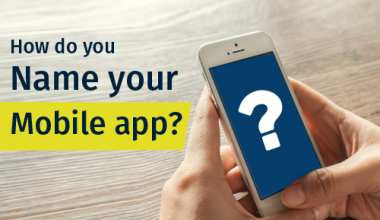iPhone and iPod Touch owners could breathe a sigh of relief when Steve Jobs unveiled the iPad.
Apple’s highly anticipated tablet computer would not, after all, require purchasing all new applications. Instead, everything in the App Store would automatically work on the iPad. As Jobs explained, tapping one button on the iPad screen transforms apps made for the 3.1-inch iPhone/iPod Touch screen to a snugger fit on the 9.7-inch iPad.
Simple, right? For the iPad owner, sure. But the iPad means bigger changes for the people who create these apps. Though the iPad has been dismissed by some as an oversized iPod Touch, it’s definitely not, as those who attempt to make iPad apps or re-create iPhone apps for it will find out fast.
That includes people like Michael Groves, who is half of a two-person development team at Wandering Pig Studios. He currently has two apps on the store, TapBox and a snow globe app. Groves, like most of his peers, is excited about the iPad. The extra screen real estate on the 9.7-inch device is a big deal, mostly because apps that were a no-go on the relatively small iPhone screen might actually work on the iPad.
“We’re starting to work on a game we originally positioned as an iPhone app, and it died because of the screen size issue. Now it will be our next project,” on the iPad, Groves said.
But bigger isn’t necessarily better in all cases. Cameron Daigle, a Web and interaction designer for Griffin, which makes all sorts of Apple accessories, says that like moving from a cramped apartment to a three-bedroom house in the suburbs, it will probably take app makers awhile to get used to all that space.
“What those (developers) are going to find is that the iPad has five times as much screen space, and your little app is going to look funny on there,” Daigle said. “It’s going to be interesting to see how people grow their apps to fill that space. You’ll see a lot of awkwardly sparse and awkwardly cluttered apps as people figure out how to use that space.”
Groves is also dealing with this problem. One of his apps is a game called Tap Box, in which players tap various colored blocks as they fly across the screen in changing patterns. Players advance by tapping all of the bad blocks as they try to make it off the screen.
“The interesting thing, on a much bigger screen size the game becomes a lot easier ” Groves said. “If you have larger targets with larger screen, you’ll not have as much of an appeal as far as maintaining a (certain) challenge level ”
For Groves, just having users click the 2x button Apple will put on the iPad screen will likely kill his app–if it’s not fun, who will buy it? So he has to basically rework his app from scratch to make it a decent experience on the iPad. So he will have to figure out a way to make his game more difficult.
Daigle, who has worked on Griffin’s iTalk voice-recording app, among others, says very simple apps like Griffin’s (the entire app consists of approximately seven elements) also won’t automatically benefit just from being larger. Making a button three times as big as the one on the iPhone app might look silly. It’s figuring out how to fill all that extra space that becomes the most important hurdle to overcome. That means rethinking what elements go on the screen, how big they are, and how users will interact with each element, all of which are things they’re working on as you read this.
Of course, many apps will translate to the large screen beautifully, like the ones we’ve already seen at the iPad introduction. Visually rich interactive games like Nova by GameLoft can only improve by being reworked and magnified. And MLB’s At Bat app benefits from being able to surface more info for stats-loving baseball geeks. It’s obviously not a coincidence as far as the apps chosen by Apple to demo the iPad–they make Apple’s new platform look good.
The iPad introduction event was not just a marketing strategy, it was also a subtle challenge to would-be iPad app makers. Apple set the bar really high with its own iPad apps. By demonstrating the likes of iBooks and iCal, applications which are very rich, distinct, and interactive, Apple is signaling to developers what they can and should do with this new platform.
“The iPad will require much more effort from a developer standpoint,” Groves said. “You have to put time into designing a workable interface that feels like it uses the screen size.”
Instead of a few weeks to make a cookie-cutter iPhone app, standing out next to iBooks or iCal will probably take a few months, depending on the number of developers who can work on it. For Groves, it’s just him and another designer. At a large mobile developer shop like GameLoft, which has 60 games on the App Store, and 800 developers who work on the iPhone platform, it still means more work to upgrade to iPad-ready apps.
GameLoft Vice President of Publishing Baudouin Corman said his company intends to rework as many of its games for iPad as it can, though all of them is not really an option. “We can’t optimize all 60,” he said. “Basically we have to make some choices…the ones that make sense best on the big screen.”
Though it’s extra work, it’s worth it, says Daigle, because App Store shoppers will take notice. “There will be a big difference between a good, paid app and a free app,” he said. “Free apps are going to look pretty free.”
And that’s not meant to denigrate free apps at all, but to say that the gap between well-designed apps and poorly thought-out ones should be very obvious. Just allowing users to click the 2x button to scale up is an OK solution, but it’s not something designers and developers should rely on, according to Daigle.
“Scaling up never looks good–it doesn’t look good in Photoshop, much less something you’re interacting with,” he said. “Apple is doing that to provide a little bit of a transitional period. But people are never going to be happy with scaling.”
But there are other things developers need to think about too. Increased size also equals increased weight–the iPad weighs in at 1.5 pounds, the iPhone 3GS at just one third of a pound. Apps that require any sort of movement or shaking, like the Bump app for example, won’t be a natural way to use the iPad.
Groves says that worries him about his snow globe app, wpSnow. You shake an iPhone or iPod Touch with his app open and snowflakes float down onto the Christmas tree. “Not many people have held an iPad. My concern is that app (requires) the user to move the phone around a lot. With the heft of the iPad, will that cause an issue with user interaction? Will users drop the pad if they’re swinging it around a lot ? ”
Clearly, this will be a learn-as-you-go process for iPad developers. While they have access to the software development kit (SDK), it only contains a simulator. Few people outside of Apple have yet to touch an iPad, and until April 3, when the device hits stores, app makers will likely have a learning process ahead of them. But for designers like Daigle who look forward to the direction the iPad is moving mobile computing in, it’s exciting, since it’s clear the iPad is just the beginning of a lot more changes in store.
“I think the iPhone/iPod Touch has been a training ground of sorts to get people used to this interface and concepts,” said Daigle. “I think we’ll look back at when iPhone first came out, (when app design meant a) top bar, bottom bar, and space in the middle. Apple did that on purpose, releasing the smaller design (of the iPhone) first to get people used to it…If they had released iPad first people would have been overwhelmed”
Resource:
http://news.cnet.com/8301-31021_3-20000393-260.html





